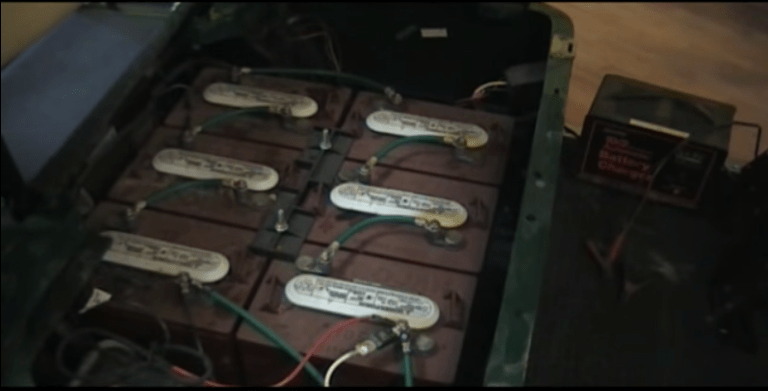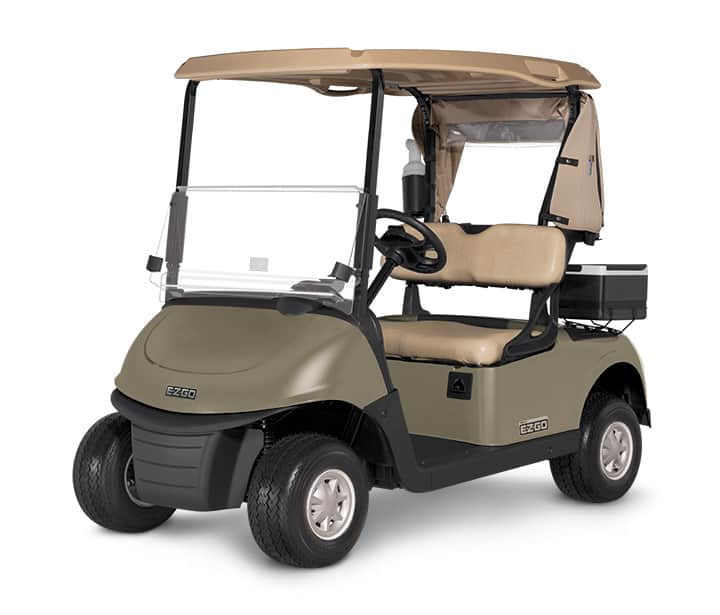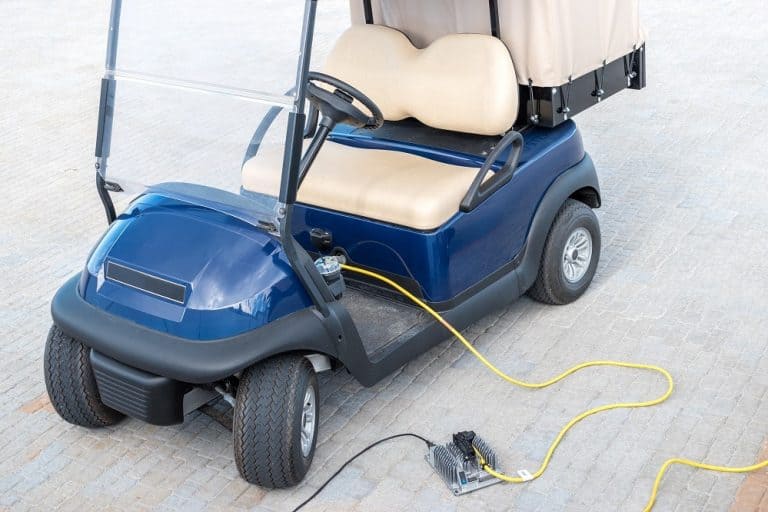Can I Use an Extension Cord to Charge My Golf Cart? (Explained)
I don’t have a lot of electrical outlets outside of my house, so when charging my golf cart, sometimes I need to use an extension cord to reach inside where there is an outlet.
But recently started wondering if that was smart to do or if I am damaging something unknowingly. But with some research, I learned this little nugget about my issue.
Typically, you can use a 12 gauge (or better) extension cord to charge your golf cart safely from longer distances.

- Lighted End and Extra Size for Your Safety
- Flame-resistant, Waterproof Weather-resistant, Cold-resistant (-50°C), corrosion-resistant

- HIGHLY VISIBLE yellow jacket provides extra safety and will not mark floors or walls
- LIGHTED END indicates power is on
In this post, I’ll show you a few of the nuances you need to know when choosing an extension cord to make sure you do not damage your cart. Some of the ones below have LONG extension cables built in to the charger, (up to 15 feet +) so check them out and pick up one that will work for you.
What gauge extension cord does a golf cart take?
For those who use electric-powered golf carts, whether you can use an extension cord to charge your golf cart is a common question.
In short, yes you can.
However, before you drive out to the nearest hardware store, be mindful about the cord you’ll need for heavy-duty electronics, and golf cart batteries are no exception.
To determine what gauge extension cord your golf cart needs, first consider what your situation is at home. Many kinds of extension cords exist, and many suit different purposes.
Some factors to consider:
- Cold weather vs. hot weather
- Indoor vs. outdoor
- What type of equipment you’ll be connecting the cord to (heavy duty vs. light duty)
- How far you need the cord to extend
- The range of amperage the cord will need to support
- How much power you need to fully charge the battery.
Various golf cart owners tend to support a 12 gauge cord for charging.
The reasoning for this is that these types of cords are designed for heavy duty electronics, and are a bit shorter in length when compared to other gauges. However, keep in mind that if your cord is shorter, it should also be thicker than most extensions so that more power can be delivered safely to your starving golf cart battery.
A 12 gauge might work for you, but it also may not. To make a 12 gauge do the best job it can, you need to make sure that your cart is closer to the outlet you’ll be drawing power from (as 12 gauges are typically shorter than a 14 gauge, for example).
Weather can also affect the charging experience. If you live in a colder climate, it may be best to select a cord designed specifically for chilly temperatures. This way, the cord will be more flexible and better able to deliver an adequate amount of power to the battery with little resistance.
Now, keep in mind, just because your cord will deliver more power in less time, doesn’t mean it’s always safer to do so. In fact, some experts recommend against getting shorter extension cords for a couple of reasons.
- One is that the cord may be too short and can’t reach the area you want to plug it into.
- Second reason explains how you may need to plug in multiple extension cords just to charge, which can cause high electrical resistance, resulting in your golf cart receiving less power than it needs.
This can be especially dangerous if you’re plugging this all together outside, which leaves areas that can short-circuit if accidentally exposed to rain and/or a wet lawn. If you’re not that concerned with getting maximum power in a minimum time-frame and want to play it safe, buy an extension cord that’s longer than what’s needed.
Another thing to look out for is what amperage the cords supports. There is no one-size-fits-all solution for this. It will depend on what your battery needs and what environment the cord will have to endure.
Refer to the golf cart manual for the specifics your battery requires and compare them with whatever extension cords you’re interested in buying.
Also, asking employees at department stores can help. The more details you gather, the better.
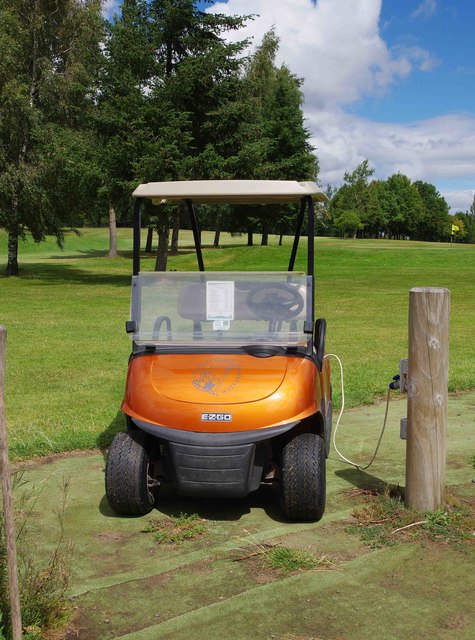
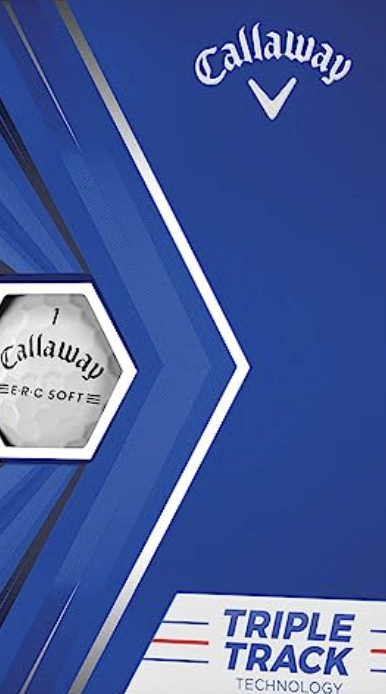
of Callaway ERC Triple
Track Golf Balls for
yourself or your buddy!
Can you plug a golf cart into a regular outlet?
Absolutely.
Although, doing so needs the right equipment. The main factor is having the correct charger for the battery you have. You may already have it, meaning you can plug it into a wall outlet and presto!
However, if you don’t currently have one in your possession, you’ll have to shop around. Be mindful of the year your cart was manufactured, as the charger you’ll need has to match or be close to the year of your vehicle. Here’s a few examples you can check out on Amazon.
Also, the charging will have to take place in a well-ventilated area. Most electric golf carts host lead-acid batteries, which can give off hydrogen gas as a byproduct during the charging process. High amounts of this gas can cause fires or even explosions if you choose to charge your cart in an enclosed space such as a garage.
Oddly enough, hydrogen gas can set off Carbon Monoxide detectors in high enough concentrations, so if you can’t charge your cart anywhere else, make sure all your detectors are working okay, and that your HVAC system has no issues that could hinder airflow.
One more tip to consider is the amount of charge needed. Most chargers will automatically shut off after the battery is full, but there are times when it won’t work.
For such a scenario, it’s advised to charge no more than 10 hours total. Newer batteries will only need 3 to 5 hours of charge time, while older models require a bit more than that. Never leave it plugged in for too long, regardless if your charger shuts off at full or not.
Doing so might cause your battery significant damage and can lead to problems such as the hydrogen gas issue mentioned earlier.
Should you charge your golf cart after every use?
Experts and golf course employees charge their carts after four hours or a full golf game (18-hole round). You may be okay if you take your golf cart for a quick trip around the block, and won’t require a charge for so short a distance driven.
What it comes down to is time and distance.
Did you drive your golf cart a lot in a few hours? It might be a good idea to give it a full charge.
Were you using your cart in short bursts within an 8-hour period? Plug it in.
The rule of thumb to remember here is, the more you use it, the more you’ll need to charge it. The more energy used, the more energy it will require. It’s common sense, but just wanting to be thorough.

and apparel.
gear, accessories and apparel. (affiliate link)
Avoid Charging Too often or Overcharging your cart?
Avoid charging too often or overcharging, therefore making your cart more reliable in the long run, keep the batteries in good shape. Most golf cart charges can stop charging once full, but it is still something to monitor.
Check for any corrosion around the nodes and wires and scrub it off with baking soda and a bristle brush (with eye protection, of course). This will prevent the battery from losing too much power, and save it from breaking down too fast. Various golf cart battery models contain distilled water to help them work.
Experts recommend that you check the water levels within the battery cells every month at least once. Don’t go past the plate level, because too much will cause overflow and corrode other parts of the exterior.





